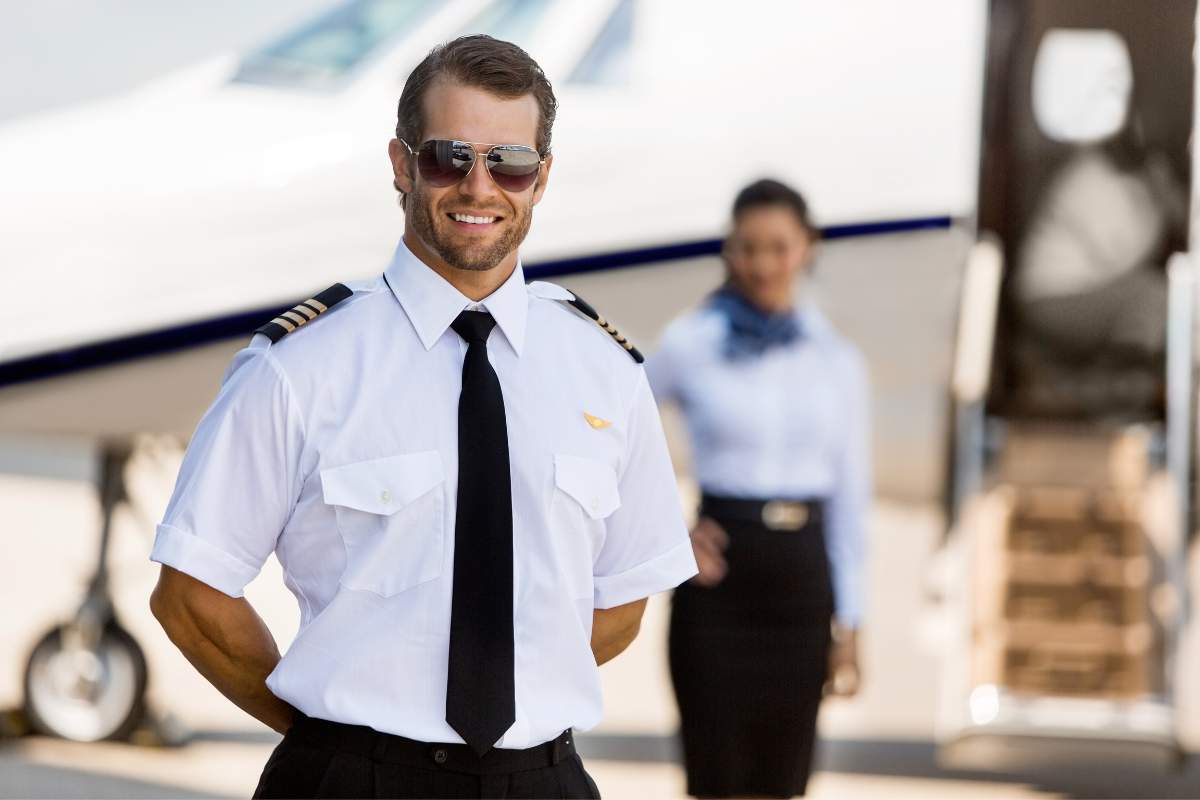Air travel has revolutionized our world, connecting continents and cultures like never before. At the heart of this transformation are the skilled pilots who dared to push the boundaries of flight. From aviation pioneers to wartime aces and modern-day heroes, these aviators have left an indelible mark on the history of flight. Their courage, innovation, and expertise have not only advanced the field of aviation but have also had far-reaching impacts on global commerce, international relations, and our understanding of the world around us.
These pilots have navigated treacherous skies, broken sound barriers, and even landed on the water, showcasing the remarkable capabilities of both human skill and aircraft technology. Their stories are tales of perseverance, ingenuity, and, sometimes, sheer audacity. They’ve crossed oceans, fought in wars, set records, and saved lives, each contributing uniquely to the tapestry of aviation history.
As we delve into the stories of these 10 pilots who shaped aviation, we’ll witness the evolution of flight from its humble beginnings to the complex, global industry it is today. We’ll see how their achievements have shaped not just the development of aircraft and aviation technology but also military strategies, commercial travel, and even our perception of what’s possible. Let’s embark on this journey through time and explore the lives and legacies of ten pilots who truly changed the face of aviation forever, inspiring generations and paving the way for the future of flight.
1. The Wright Brothers – Pioneers of Powered Flight
No discussion of great pilots can begin without mentioning Wilbur and Orville Wright. These ingenious brothers from Ohio didn’t just pilot the first powered aircraft; they invented it. On December 17, 1903, near Kitty Hawk, North Carolina, the Wright Flyer took to the skies, ushering in the age of powered flight.
The Wright brothers’ success came from their methodical approach to solving the challenges of flight. Rather than focusing solely on powerful engines, they mastered the art of aircraft control. Their innovations in wing design and propeller efficiency laid the foundation for all future aviation developments. While some historical debate surrounds the exact timing of the first airplane, the Wright brothers’ legacy as the fathers of aviation remains secure.
2. Charles Lindbergh – The Lone Eagle Crosses the Atlantic
Charles Lindbergh’s name became synonymous with aviation adventure when he completed the first solo, nonstop transatlantic flight in May 1927. At just 25 years old, Lindbergh piloted the Spirit of St. Louis from New York to Paris, covering 5,800 kilometers in a grueling 33-hour journey. This feat captured the world’s imagination and opened the door to intercontinental air travel.
Lindbergh’s aviation career extended far beyond this single flight. He and his wife, Anne Morrow Lindbergh, conducted numerous survey flights to establish efficient air routes around the globe. His contributions to aviation safety and navigation were significant, earning him countless accolades, including the Medal of Honor and the Distinguished Flying Cross.
3. Amelia Earhart – Breaking Barriers in the Sky
Amelia Earhart’s name is forever etched in aviation history as a trailblazer for women in flight. In 1928, she became the first woman to fly across the Atlantic Ocean, albeit as a passenger. Unsatisfied with this achievement, Earhart set out to conquer the Atlantic solo in 1932, becoming the first woman and only the second person to accomplish this feat.
Earhart’s influence extended beyond her flying achievements. She was a passionate advocate for women’s rights and worked tirelessly to promote aviation to the public. Her mysterious disappearance during an attempt to circumnavigate the globe in 1937 has only added to her legendary status, inspiring generations of pilots and adventurers to push the boundaries of what’s possible in the air.
4. The Red Baron – Ace of Aces in the Great War
Baron Manfred von Richthofen, better known as the “Red Baron,” became a legend during World War I, embodying both the chivalry and the deadly efficiency of aerial combat. Despite his short life—he died at just 25 years old—Richthofen’s impact on aviation history is immeasurable. With over 80 confirmed aerial victories, he remains one of the most successful fighter pilots of all time.
The Red Baron’s tactics and leadership transformed air warfare, and his bright red Fokker Dr.I triplane became an icon of the skies. His legacy extends far beyond his combat record, influencing military aviation doctrine and capturing the public imagination for generations. The Red Baron’s story highlights the rapid evolution of aircraft technology and tactics during the early years of powered flight, as well as the romantic yet deadly nature of aerial combat in its infancy.
5. General James H. Doolittle – From Daredevil to War Hero
James H. Doolittle’s aviation career reads like an adventure novel, filled with record-breaking flights and daring wartime missions. His 1922 solo crossing of the continental United States in less than 24 hours was just the beginning of a storied career. Doolittle’s contributions to aviation safety were groundbreaking; in 1929, he performed the first “blind” flight, taking off, flying, and landing using only instruments. This achievement paved the way for modern all-weather flying.
However, Doolittle is perhaps best remembered for leading the audacious raid on Tokyo in 1942, just months after the attack on Pearl Harbor. This mission, which saw B-25 bombers launch from an aircraft carrier to strike the Japanese homeland, boosted American morale and demonstrated the strategic potential of air power. Doolittle’s combination of technical expertise, courage, and leadership made him a pivotal figure in the development of aviation, both as a civilian pursuit and a military asset. His career spanned the rapid technological advancements of early aviation and showcased the potential of air power to shape global events.
6. Noel Wien – Taming the Alaskan Skies
While perhaps less known than some of his contemporaries, Noel Wien’s impact on aviation in Alaska cannot be overstated. Wien introduced the airplane to the Last Frontier in 1924, founding Wien Air Alaska, the state’s first airline. In a land where harsh weather and vast, untamed wilderness made ground travel nearly impossible, Wien’s flights were nothing short of revolutionary.
He pioneered routes across Alaska, becoming the first to fly to the Arctic Circle from Alaska or Canada and the first to cross the Bering Strait from North America to Siberia. Wien’s resilience in the face of challenging conditions—including flying with polio and after losing an eye—epitomizes the spirit of early aviators. His work laid the foundation for Alaska’s robust aviation infrastructure, which remains crucial to the state’s economy and way of life today. Wien’s story highlights how aviation can transform remote regions, connecting isolated communities and opening up new economic opportunities.
7. Chesley ‘Sully’ Sullenberger – Hero of the Hudson
Chesley “Sully” Sullenberger catapulted to worldwide fame on January 15, 2009, when he successfully executed an emergency water landing on the Hudson River in New York City. After a flock of Canada geese disabled both US Airways Flight 1549 engines, Sullenberger’s quick thinking and exceptional piloting skills saved all 155 passengers and crew on board. This incident dubbed the “Miracle on the Hudson,” showcased the importance of pilot experience and preparedness in critical situations.
Sullenberger’s calm demeanor and precise decision-making under extreme pressure exemplify the highest standards of professional aviation. Beyond this famous incident, Sullenberger’s career spans decades of contributions to aviation safety. He has leveraged his newfound fame to advocate for improved airline safety measures and to inspire a new generation of pilots. Sullenberger’s story reminds us that even in an age of advanced technology, the human element—skilled pilots making split-second decisions—remains crucial to air travel safety.
8. General Charles E. Yeager – Breaking the Sound Barrier
Chuck Yeager’s name is synonymous with pushing the boundaries of aviation. On October 14, 1947, Yeager became the first pilot to break the sound barrier, flying the Bell X-1 at Mach 1.07. This achievement, shrouded in secrecy at the time, marked a pivotal moment in aviation history, proving that supersonic flight was possible and opening the door to a new era of high-speed travel. Yeager’s career, however, encompasses far more than this single feat.
As a fighter pilot in World War II, he shot down 13 enemy aircraft, including five in a single day. His combat experience and exceptional flying skills made him an ideal test pilot, allowing him to contribute significantly to the development of supersonic aircraft. Yeager’s career spans the evolution of aviation from propeller-driven fighters to supersonic jets, and his influence on pilot training and aircraft design continues to be felt today. His combination of natural flying ability, technical knowledge, and courage in the face of unknown risks made him a true pioneer of aviation.
9. Erich Hartmann – The Black Devil of the Eastern Front
Erich Hartmann, known as the “Black Devil” to his Soviet adversaries, is the most successful fighter pilot in the history of aerial warfare. With an astounding 352 confirmed aerial victories during World War II, Hartmann’s record remains unbroken to this day. His incredible success was not just a result of his natural talent but also of his tactical acumen and disciplined approach to combat. Hartmann’s preferred method was to get close to his target before firing, a high-risk strategy that maximized his chances of a kill while minimizing ammunition waste.
Despite flying over 1,404 combat missions, Hartmann was never shot down due to enemy action, though he was forced to crash-land 14 times due to damage from debris from his own targets. His career highlights the rapid evolution of air combat tactics during World War II and the critical role of fighter pilots in modern warfare. After the war, Hartmann spent ten years in Soviet captivity before returning to Germany, where he played a crucial role in rebuilding the West German Air Force. His legacy continues to influence fighter pilot training and tactics worldwide.
10. Robert A. Hoover – The Pilot’s Pilot
Robert “Bob” Hoover, often referred to as the “pilot’s pilot,” was renowned for his exceptional stick-and-rudder skills and his ability to push aircraft to their absolute limits. His career spanned military service, test piloting, and aerobatic performances, making him one of the most versatile aviators in history. During World War II, Hoover was shot down over France and spent 16 months as a POW before making a daring escape by stealing a German Fw 190 fighter plane.
After the war, he became a test pilot, working alongside Chuck Yeager in the early days of supersonic flight testing. However, Hoover is perhaps best known for his incredible air show performances, where he showcased maneuvers that seemed to defy the laws of physics. His energy management techniques and precision flying in propeller, jet, and glider aircraft set new standards for aerobatic performance. Hoover’s ability to pour iced tea while performing a barrel roll became legendary, demonstrating both his exceptional skill and his flair for showmanship. Throughout his career, Hoover contributed significantly to aviation safety, using his performances to educate pilots about aircraft capabilities and the importance of maintaining proficiency.
Aviation’s Lasting Legacy – From Pioneers to Modern Marvels
The stories of these ten remarkable pilots span over a century of aviation history, from the Wright brothers’ first powered flight to the supersonic era and beyond. Each of these aviators contributed uniquely to the advancement of flight, pushing the boundaries of what was possible and inspiring generations of pilots to follow.
Their achievements have not only shaped the development of aircraft and aviation technology but have also had profound impacts on global commerce, international relations, and our understanding of the world around us. As we look to the future of aviation, with its promises of hypersonic travel, electric aircraft, and even commercial space flight, we stand on the shoulders of these giants. Their courage, innovation, and skill laid the foundation for the complex web of air travel that now spans the globe, connecting people and cultures in ways that were once unimaginable.

